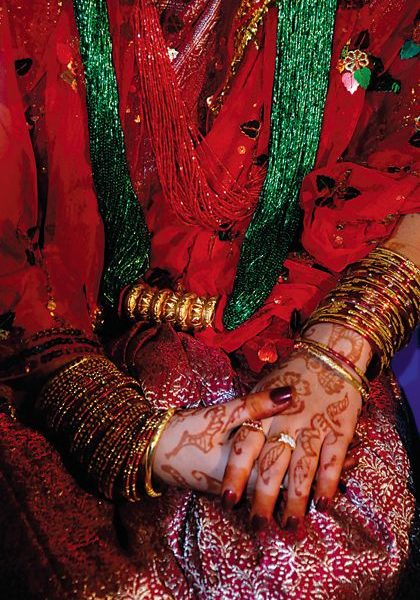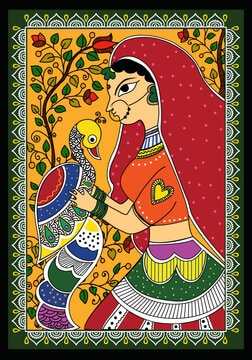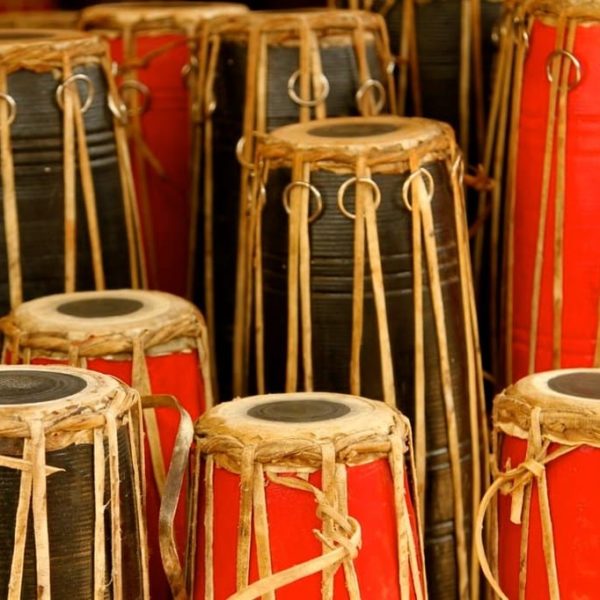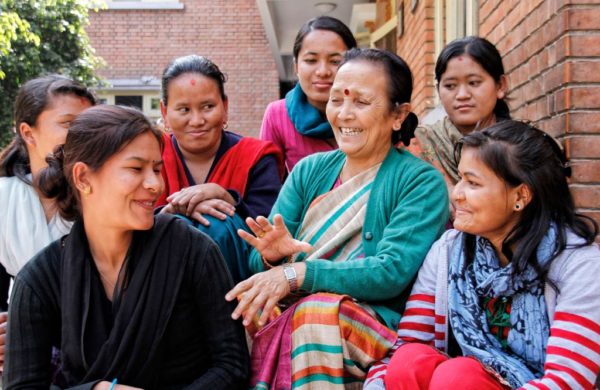A Buddhist prayer wheel is generally a hollow cylindrical wheel made from metal, wood, or stone, often beautifully embossed, mounted on a rod handle or axis made of wood or a precious metal. Simply, it is an inseparable part of the Tibetan and Buddhist tradition. Prayer wheels are known as Mani wheels in the Tibetan language. The Buddhist prayer wheels are used as an aid to meditation and as a means of accumulating wisdom, good karma, and means of putting bad karmas and negative energy aside.
The inner portion of the hollow cylinder contains a tightly scrolled paper or other material full of printed or handwritten mantra. According to the Tibetan Buddhist tradition based on the lineage texts regarding prayer wheels, spinning such a wheel will have much the same meritorious effect as orally reciting the prayers.
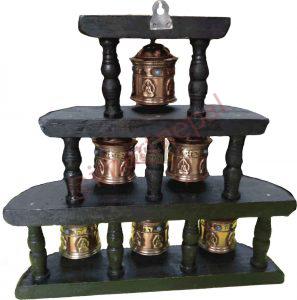
Traditionally, the mantra Om Mani Padme Hum are inscriptions in Sanskrit (or sometimes Tibetan) script and auspicious Buddhist symbols, on the outside of the wheel. Also sometimes depicted are Dakinis, Protectors and very often the 8 auspicious symbols Ashtamangala. This outer part is removable to allow for the insertion of the sacred text into the cylinder. At the core of the cylinder is a “Life Tree” often made of wood or metal with certain mantras written on or wrapped around it. Many thousands (or in the case of larger prayer wheels, millions) of mantras are then wrapped around this life tree. Yak grease is used on the handle to make them spin more quietly.
It is believed that each turn of a prayer wheel represents a recitation of the prayer inside and transports it to heaven.
Varying in size from thimbles to oil drums, with some the size of buildings, prayer wheels can be made of wood, copper, bronze, silver or gold. Pilgrimage paths (koras) are often lined with a prayer wheel. Pilgrims spin the wheels to earn merit and help them focus on the prayers they are reciting. According to Tibetan Buddhist belief, spinning a prayer wheel is just as effective as reciting the sacred texts aloud.
Benefits of Prayer Wheels
Prayer wheels come in many sizes: they may be small and attached to a stick, and spun around by hand; medium-sized and set up at monasteries or temples, or very large and continuously spun by a water mill. But small hand-held wheels are the most common by far.
Just touching and turning a prayer wheel brings incredible purification and accumulates unbelievable merit. It is believed that the more prayers one offers, the more merit he or she earns, which improves his or her chances or receiving a higher reincarnation and eventually achieving nirvana.

Turning or spinning the Buddhist prayer wheels is considered so powerful that, it is compared with the power of one hundred monks praying for the whole life.
- One of the benefits of the prayer wheel is that it embodies all the actions of the Buddhas and bodhisattvas of the 10 directions. To benefit sentient beings, the buddhas and bodhisattvas manifest in the prayer wheel to purify all our negative karmas and obscurations, and to cause us to actualize the realizations of the path to enlightenment.
- It is believed that the prayer through the Buddhist prayer wheels grant everything a worshipper asks for.
- There is a heavy belief that turning the Buddhist prayer wheels with remorse and guilt will help you eliminate the four bad deeds, the five actions of immediate retribution, the eight of the wrong views and finally the ten non-virtues.
- Any person who turns the Buddhist prayer wheels in his life shall never again born with any anomalies in his/her life, never born with disorders like blindness, deafness, muteness or as a cripple.
Types of Prayer Wheels
Buddhist prayer wheels range highly in size and styles. From a simple hand-held prayer wheel and table top prayer wheel to an enormous size of eight to twelve feet tall and with a diameter of five to six feet. It is not only the size or magnitude of a prayer wheel that defines its types. There are many types of Buddhist/Tibetan prayer wheels:
- Mani wheel (a hand prayer wheel)
- Water wheels (turned by flowing water)
- Fire wheel (turned by the heat of a candle or electric light)
- Wind wheel ( a type of prayer wheel is turned by wind)
- Stationary prayer wheels
- Electric dharma wheels(powered by electric motors)
Rotating these prayer wheels and reciting is considered one of the most thoughtful and beneficial act. Most often build in the periphery of stupas and monasteries, a number of Buddhist prayer wheels might range from a few to hundreds for people to spin them as they walk past or when they rotate around the temple or stupa in a clockwise direction.
A fine example of huge numbers of prayer wheels in one place can be the famous Soyambhunath stupa, where numerous Buddhist prayer wheels are installed around the huge stupa of Soyambhunath. The mantra to recite while one is turning the Buddhist prayer wheels is: “OM MANI PADME HUM” or “OM MANI PEME HUNG”.
Six Syllabuses and what each syllabus means
Though the mantra is interpreted in various ways depending upon different Buddhist philosophy school, here is the explanation of the mantra by Tsangsar Tulku Rinpoche. The manta has six syllabuses and each syllabus means something and represents something.
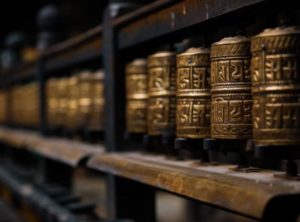
The six syllabi of the mantra that is written inside the scroll of a Buddhist prayer wheel are:
1. OM
It is a spiritual Sanskrit sound of Hindu foundation, holy and significant in a variety of Dharmic religions such as Hinduism, Buddhism, and Jainism. In the mantra OM MANI PADME HUM, it represents Generosity, purifies Pride / Ego and itself is represented by the color white with a symbol of Deity- Wisdom.
2. MA
It represents Ethics, purifies Jealousy / Lust for entertainment and itself is represented by color Green with a symbol of Deity- Compassion.
3. NI
It simply represents Patience, purifies Passion/desire and itself is represented by color Yellow with a symbol of Deity- Body, speech, mind quality and activity.
4. PAD
It represents Diligence, purifies Ignorance/prejudice and itself is represented by color Blue with a symbol of Deity- Equanimity.
5. ME
It represents Renunciation, purifies Poverty/possessiveness and itself is represented by color Red with the symbol of Deity- Bliss.
6. HUM
It represents Wisdom, purifies Aggression/hatred and itself is represented by color Black with a symbol of Quality of Compassion.
The prayer wheels are an extremely powerful tool for praying. Amitabha Buddha has said, “Anyone who recites the six syllables while turning the dharma wheel at the same time is equal in fortune to the Thousand Buddhas.” It accumulates the merit and helps to purify the obstacles of life.
The Buddhist people carry them around for hours, and even on long pilgrimages, spinning them any time they have a hand free. Prayer wheels at monasteries and temples are located at the gates of the property, and devotees spin the wheels before passing through the gates.
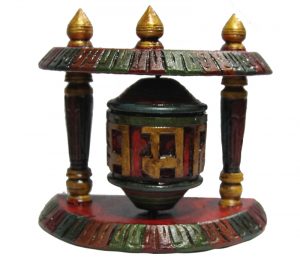
When to Use a Prayer Wheel
There is no any exact definition when it comes to when to use the prayer wheels still, one can turn the prayer wheel anytime during his/her daily meditation or mantra recitals or during when some spiritual practices are performed. The prayer wheel can also be spun while circumambulating a stupa and even when you are watching TV, listening to music or reading books along with all of your other daily works. But the Buddhist prayer shouldn’t be spun while a Lama is delivering a speech or while he is teaching.
How to Use a Prayer Wheel
The prayer wheel should be turned clockwise with a single-pointed concentration of body, speech, and mind. It is easy and fast to turn the prayer wheel and it does not require great physical strength or many repetitions. The activity is easy to do, the meaning and or purpose is great, and the benefit is great. Turning the Buddhist prayer wheels does not require much physical strength and many repetitions.
We offer different quality of best Buddhist Prayer Wheels with or without carving, small & large size prayer wheel, please email us if you are looking to buy Buddhist Prayer Wheels.
Conclusion
Prayer wheels are an important part of many Buddhist’s practices because they allow for a simple and elegant way of taking mantra repetition to a new level. We believe spinning the wheel, gives the practitioner a way to break mental restlessness. Check out our prayer wheel!


